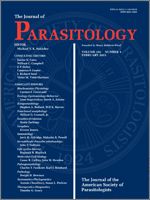Two genera of caryophyllidean cestodes, Monobothrium Diesing, 1863 and Promonobothrium Mackiewicz, 1968, from cypriniform fishes (cyprinids and suckers) in the Holarctic Region, are revised using morphological and molecular evidence. Monobothrium, which includes morphologically distinct species that occur in European cyprinids (Cyprinidae) and North American suckers (Catostomidae), is separated into 3 genera. Monobothrium becomes monotypic and is represented by its type species, Monobothrium wageneri Nybelin, 1922, which occurs in European tench, Tinca tinca (Cyprinidae). Monobothrium auriculatum Kulakovskaya, 1961 from Leuciscus danilevskii (Cyprinidae) in the Ukraine, is tentatively transferred to Caryophyllaeus Gmelin, 1790 as Caryophyllaeus auriculatus (Kulakovskaya, 1961) n. comb. because it possesses morphological characteristics considered to be typical of Caryophyllaeus but which are absent in Monobothrium (shape of the scolex, presence of a seminal receptacle, short neck, and absence of a large, muscular papilla surrounding the large gonopores). The 5 remaining Monobothrium species from suckers in North America are transferred to Promonobothrium based on shared morphological features and molecular data. Species of Promonobothrium differ from M. wageneri by having an external seminal vesicle (absent in M. wageneri), the absence of postovarian vitelline follicles in North American species (present in M. wageneri), and a scolex that is digitiform papillate, loculopapillate, or loculotruncate, i.e., equipped with weak loculi and a terminal introvert (vs. claviform, bluntly ended, with 6 weak, shallow, longitudinal grooves in M. wageneri). Phylogenetic analysis of nuclear ribosomal RNA genes ssr- and lsrDNA placed Promonobothrium minytremi within a clade of 3 of the 5 North American Monobothrium species. The position of M. wageneri, although distinct from the remaining Monobothrium species, is unresolved within the Caryophyllidea. This study further supports the pattern that the biogeography of caryophyllidean taxa is generally constrained by host and continental association.
BioOne.org will be down briefly for maintenance on 17 December 2024 between 18:00-22:00 Pacific Time US. We apologize for any inconvenience.
How to translate text using browser tools
1 February 2015
New Circumscription Of Freshwater Fish Parasites Monobothrium Diesing, 1863 and Promonobothrium Mackiewicz, 1968 (Cestoda: Caryophyllidea) Using Morphological and Molecular Evidence
Tomáš Scholz,
Mikuláš Oros,
Anindo Choudhury,
Jan Brabec,
Andrea Waeschenbach
ACCESS THE FULL ARTICLE

Journal of Parasitology
Vol. 101 • No. 1
February 2015
Vol. 101 • No. 1
February 2015




